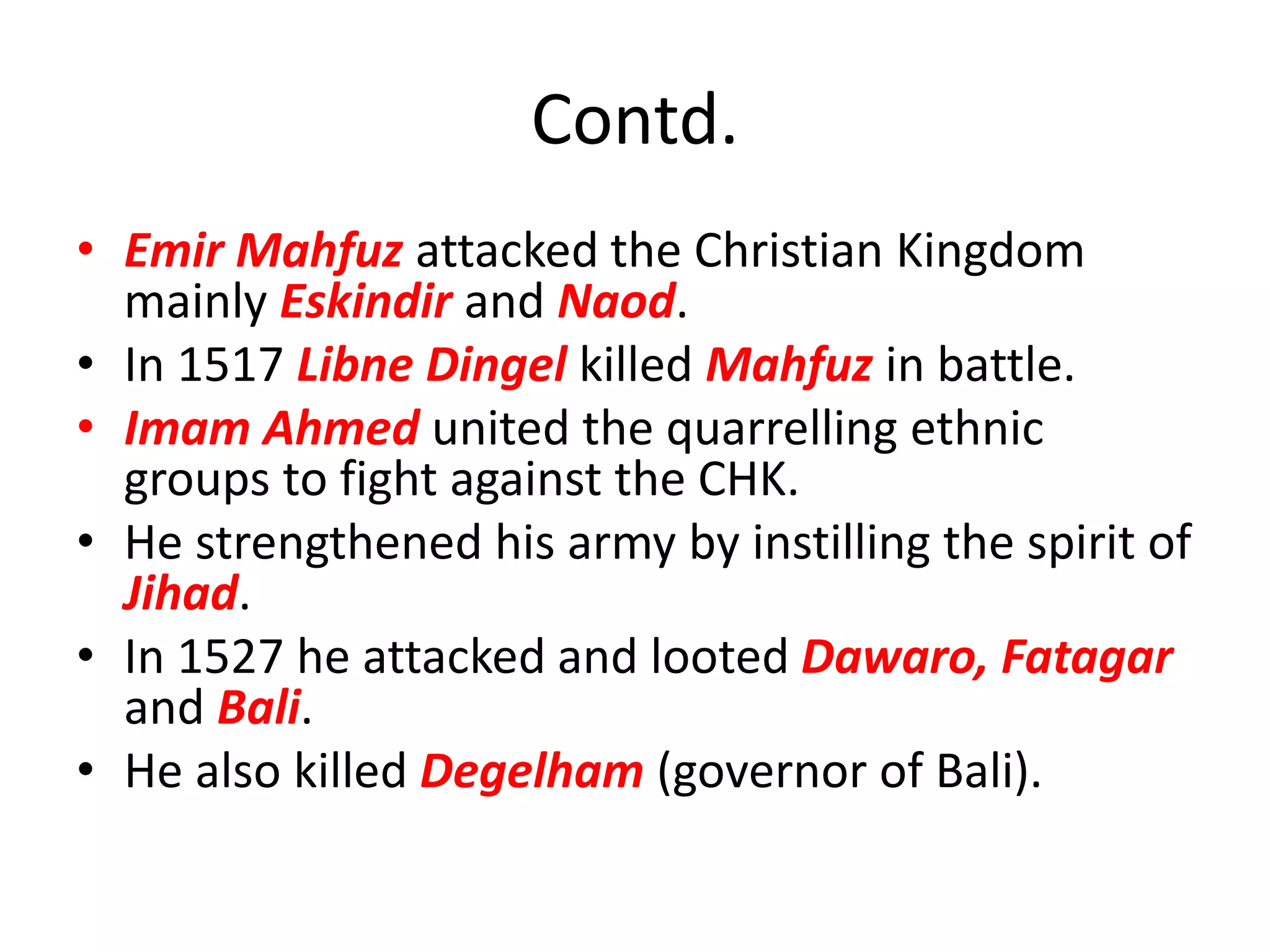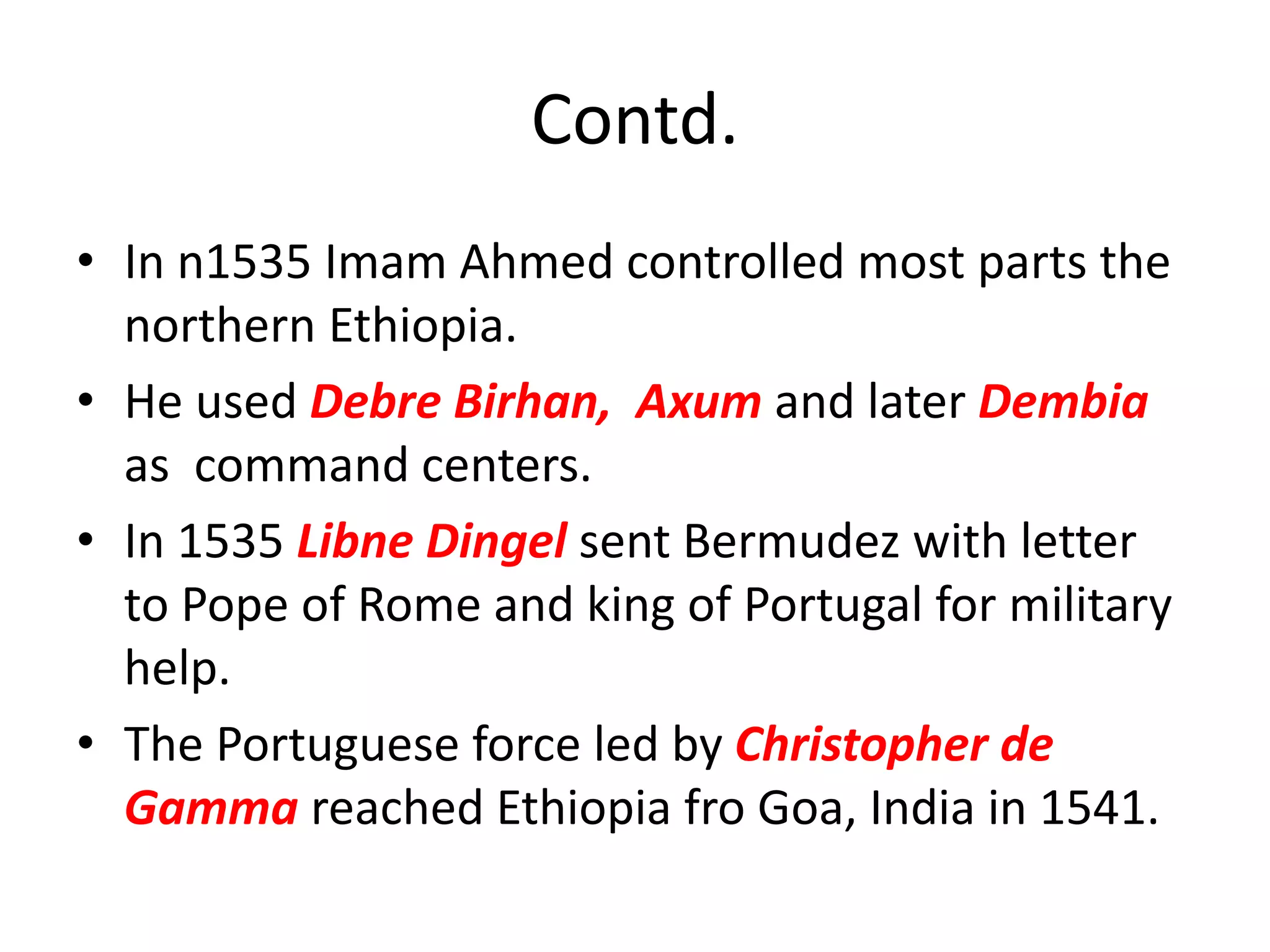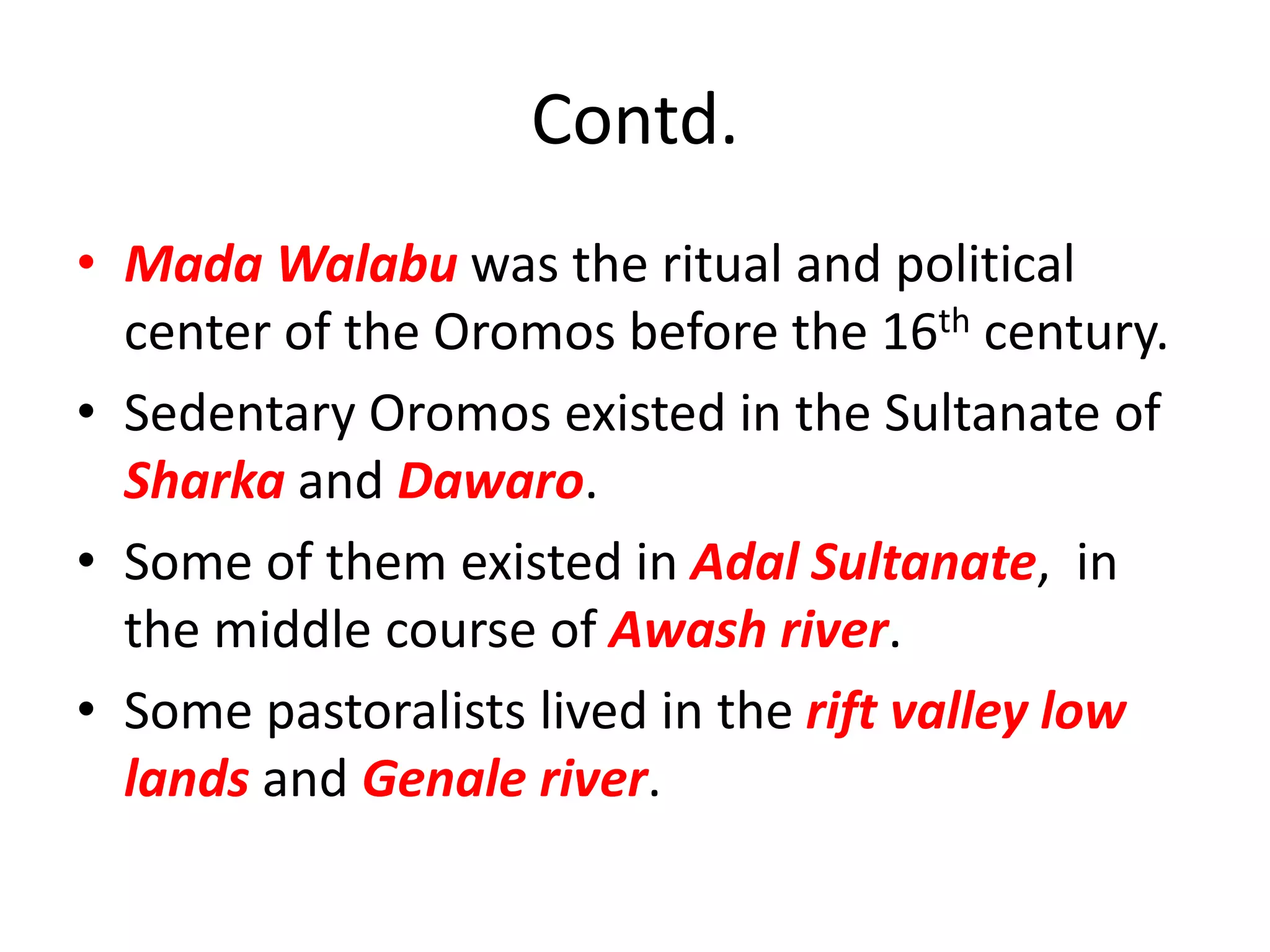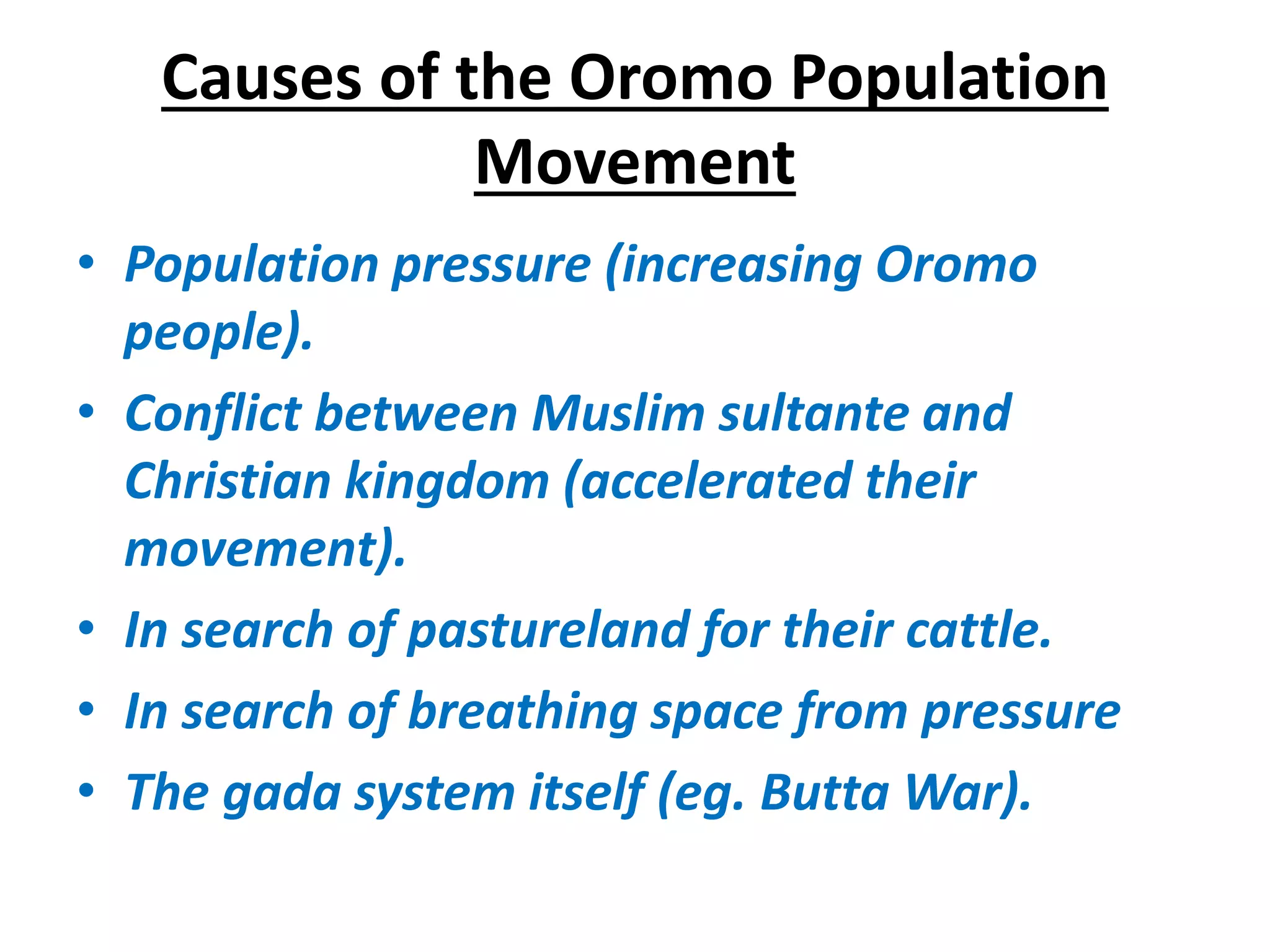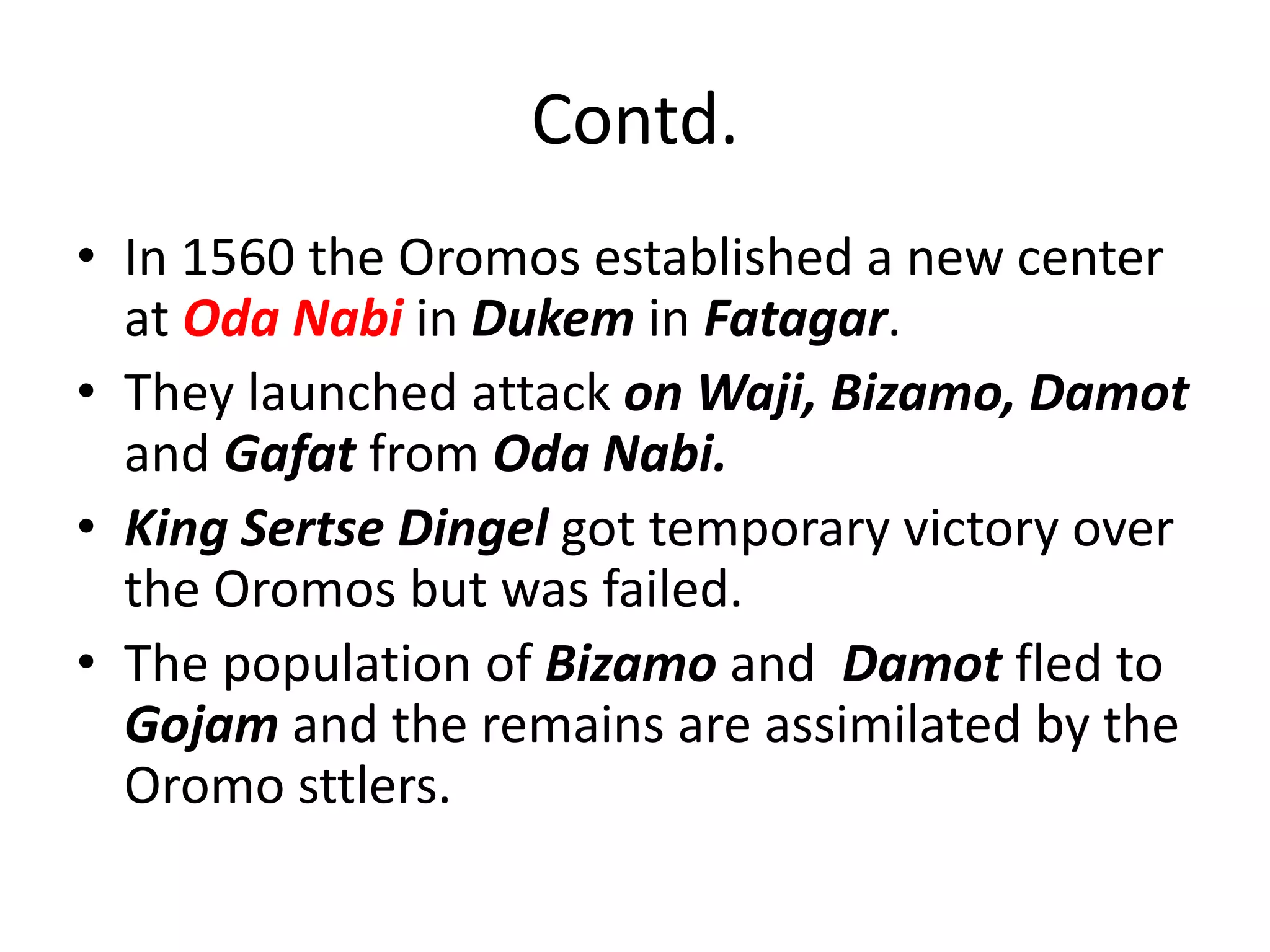The document discusses major events that occurred in the 16th century Ethiopian region, including increased rivalry between Portugal and the Ottoman Empire for influence over Ethiopia, the wars led by Imam Ahmad of Adal against the Christian highlands which weakened both sides, and the large population movement of Oromo people from their original homeland in the south to other areas which was a major event of the century.







